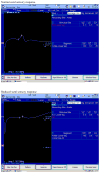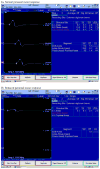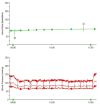Amyloid neuropathies
- PMID: 23239211
- PMCID: PMC3531896
- DOI: 10.1002/msj.21352
Amyloid neuropathies
Abstract
Peripheral neuropathy is a common complication of many of the systemic amyloidoses. Although the cause of neuropathy is not entirely clear, it is likely related to amyloid deposition within the nerve. This may lead to focal, multifocal, or diffuse neuropathies involving sensory, motor and/or autonomic fibers. The presenting symptoms depend on the distribution of nerves affected. One of the most common phenotypes is sensorimotor polyneuropathy, which is characterized by symptoms of neuropathic pain, numbness, and in advanced cases weakness. Symptoms begin in the feet and ultimately progress to the proximal legs and hands. The most common focal neuropathy is a median neuropathy at the wrist, clinically known as carpal tunnel syndrome. Carpal tunnel symptoms may include pain and sensory disturbances in the lateral palm and fingers; hand weakness may ensue if the focal neuropathy is severe. Autonomic neuropathy may affect a variety of organ systems such as the cardiovascular, gastrointestinal, and genitourinary systems. Symptoms may be non-specific making the diagnosis of autonomic neuropathy more difficult to identify. However, it is important to recognize and distinguish autonomic neuropathy from diseases of the end-organs themselves. This article reviews the inherited and acquired amyloidoses that affect the peripheral nervous system including familial amyloid polyneuropathy, and primary, secondary and senile amyloidosis. We emphasize the clinical presentation of the neurologic aspects of these diseases, physical examination findings, appropriate diagnostic evaluation, treatment and prognosis.
© 2012 Mount Sinai School of Medicine.
Figures






References
-
- Kyle RA, Kelly JJ, Dyck PJ. Amyloidosis and neuropathy. In: Dyck PH, Thomas PK, editors. Peripheral Neuropathy. 4. Philadelphia: Elsevier Saunders; 2005. pp. 2427–2451.
-
- Sipe JD, Benson MD, Buxbaum JN, Ikeda S, Merlini G, Saraiva MJ, Westermark P. Amyloid fibril protein nomenclature: 2010 recommendations from the nomenclature committee of the International Society of Amyloidosis. Amyloid. 2010 Sep;17(3–4):101–4. Epub 2010 Nov 2. - PubMed
-
- Andrade C. A peculiar form of peripheral neuropathy. Familial atypical generalized amyloidosis with special involvement of the peripheral nerves. Brain. 1952;75:408–427. - PubMed
-
- Araki S, Mawatari S, Ohta M, et al. Polyneuritic amyloidosis in a Japanese family. Arch Neurol. 1968;18:593–602. - PubMed
-
- Andersson R. Familial amyloidosis with polyneuropathy. A clinical study based on patients living in northern Sweden. Acta Med Scand (Suppl) 1976;590:1–64. - PubMed
Publication types
MeSH terms
Supplementary concepts
Grants and funding
LinkOut - more resources
Full Text Sources
Other Literature Sources

